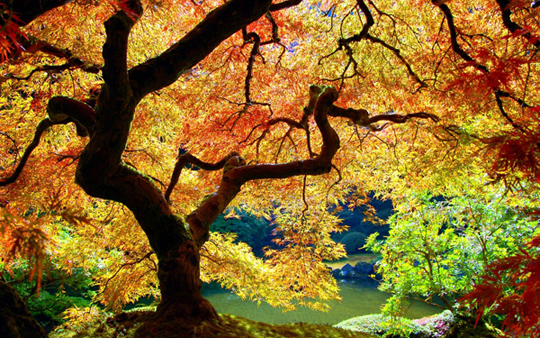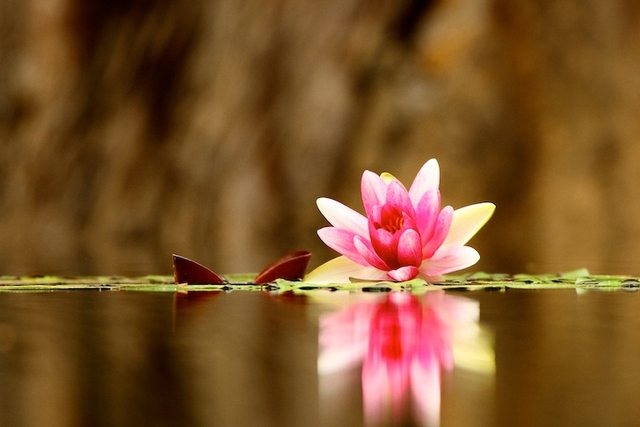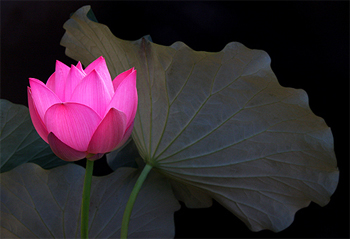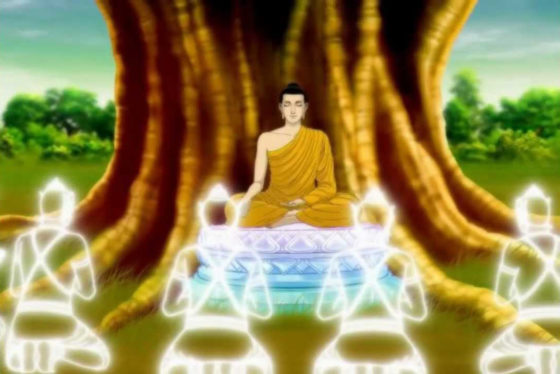
Here’s a beautiful lovingkindness chant from the Theravadin tradition that I first came across while on retreat at the Insight Meditation Society in Barre, Massachusetts.
This kind of chant can be a meditation in its own right. As you learn the meaning it becomes a series of reflections and aspirations which help retrain the mind. Even when you don’t understand the meaning fully it can be a mindfulness practice which helps us develop calm and focus. And also, as long as you’re chanting these Pali words you won’t be doing so much of that tiresome thinking that causes worry, stress, anger, etc.
It comes with a very pleasant lilting tune, and here is a version of the traditional Pali chant, by the Venerable Ariya Ñana.
http://www.wildmind.org/audio/Ariya-Nani-metta-chant.mp3
And as an added bonus, here’s a modern setting of the metta chant by Imee Ooi, a self-taught composer and arranger who is classically trained in piano and has done numerous musical works for television networks in and out of Malaysia.
http://www.wildmind.org/audio/metta.mp3
Aham avero homi May I be free from enmity and danger
abyapajjho homi May I be free from mental suffering
anigha homi May I be free from physical suffering
sukhi attanam pariharami May I take care of my own happiness
Mama matapitu May my parents
acariya ca natimitta ca teacher, family, and friends
sabrahmacarino ca fellow Dhamma farers
avera hontu be free from enmity and danger
abyapajjha hontu be free from mental suffering
anigha hontu be free from physical suffering
sukhi attanam pariharant may they take care of their own happiness
Imasmim arame sabbe yogino May all meditators in this place
avera hontu be free from enmity and danger
abyapajjha hontu be free from mental suffering
anigha hontu be free from physical suffering
sukhi attanam pariharantu May they take care of their own happiness
Imasmim arame sabbe bhikkhu May all monks in this place
samanera ca and novice monks
upasaka – upasikaya ca laymen and laywomen disciples
avera hontu be free from enmity and danger
abyapajjha hontu be free from mental suffering
anigha hontu be free from physical suffering
sukhi – attanam pariharantu May they take care of their own happiness
Amhakam catupaccaya – dayaka May our donors of the four supports: clothing, food, medicine and lodging
avera hontu be free from enmity and danger
abyapajjha hontu be free from mental suffering
anigha hontu be free from physical suffering
sukhi – attanam pariharantu May they take care of their own happiness
Amhakam arakkha devata May our guardian devas
Ismasmim vihare in this monastery
Ismasmim avase in this dwelling
Ismasmim arame in this compound
arakkha devata May the guardian devas
avera hontu be free from enmity and danger
abyapajjha hontu be free from mental suffering
anigha hontu be free from physical suffering
sukhi – attanam pariharantu may they take care of their own happiness
Sabbe satta May all beings
sabbe pana all breathing things
sabbe bhutta all creatures
sabbe puggala all individuals (all beings)
sabbe attabhava – pariyapanna all personalities (all beings with mind and body)
sabbe itthoyo may all females
sabbe purisa all males
sabbe ariya all noble ones (awakened beings)
sabbe anariya all worldlings (those yet to attain awakening)
sabbe deva all devas (deities)
sabbe manussa all humans
sabbe vinipatika all those in the woeful planes
avera hontu be free from enmity and dangers
abyapajjha hontu be free from mental suffering
anigha hontu be free from physical suffering
sukhi attanam pariharantu may they take care of their own happiness
Dukkha muccantu May all being be free from suffering
Yattha-laddha-sampattito mavigacchantu May whatever they have gained not be lost
Kammassaka All beings are owners of their own Kamma
Purathimaya disaya in the eastern direction
pacchimaya disaya in the western direction
uttara disaya in the northern direction
dakkhinaya disaya in the southern direction
purathimaya anudisaya in the southeast direction
pacchimaya anudisaya in the northwest direction
uttara anudisaya in the northeast direction
dakkhinaya anudisaya in the southwest direction
hetthimaya disaya in the direction below
uparimaya disaya in the direction above
Sabbe satta May all beings
sabbe pana all breathing things
sabbe bhutta all creatures
sabbe puggala all individuals (all beings)
sabbe attabhava – pariyapanna all personalities (all beings with mind and body)
sabbe itthoyo may all females
sabbe purisa all males
sabbe ariya all noble ones (awakened beings)
sabbe anariya (those yet to attain awakening)
sabbe deva all devas (deities)
sabbe manussa all humans
sabbe vinipatika all those in the woeful planes
avera hontu be free from enmity and dangers
abyapajjha hontu be free from mental suffering
anigha hontu be free from physical suffering
sukhi attanam pariharantu may they take care of their own happiness
Dukkha muccantu May all beings be free from suffering
Yattha-laddha-sampattito mavigacchantu May whatever they have gained not be lost
Kammassaka All beings are owners of their own kamma
Uddham yava bhavagga ca As far as the highest plane of existence
adho yava aviccito to as far down as the lowest plane
samanta cakkavalesu in the entire universe
ye satta pathavicara whatever beings that move on earth
abyapajjha nivera ca may they be free of mental suffering and enmity
nidukkha ca nupaddava and from physical suffering and danger
Uddham yava bhavagga ca As far as the highest plane of existence
adho yava aviccito to as far down as the lowest plane
samanta cakkavalesu in the entire universe
ye satta udakecara whatever beings that move on water
abyapajjha nivera ca may they be free of mental suffering and enmity
nidukkha ca nupaddava and from physical suffering and danger
Uddham yava bhavagga ca As far as the highest plane of existence
adho yava aviccito to as far down as the lowest plane
samanta cakkavalesu in the entire universe
ye satta akasecara whatever beings that move in air
abyapajjha nivera ca may they be free of mental suffering and enmity
nidukkha ca nupaddava and from physical suffering and danger.
Source: http://www.wildmind.org






